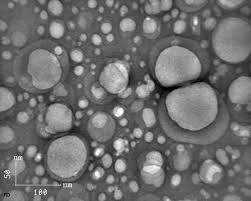Objective
This work compares the occlusive effect and the penetration enhancement ability of solid lipid nanoparticles (SLN) and nanostructured lipid carriers (NLC), through in vitro skin. Methods: SLN and NLC were prepared by high shear homogenization and characterized by size, polydispersity index, zeta potential, morphology and physical stability. Occlusive effect was assessed by an in vitro test and by measuring TEWL using pig skin. Skin treated with the lipid carriers was visualized by SEM. A penetration test through skin, followed by tape stripping, was carried out using Nile red as a marker. Results: SLN (200 ± 6 nm) and NLC (192 ± 11 nm) were obtained. An occlusion factor of 36% – 39% was observed for both systems, while a reduction in TEWL of 34.3% ± 14.8% and 26.2% ± 6.5% was seen after treatment with SLN and NLC, respectively. SEM images showed a film formed by the lipid carriers, responsible for the occlusion observed. No differences were found between the occlusive effect produced by SLN and NLC in both tests. NLC allowed the penetration of a greater amount of Nile red than SLN: 4.7 ± 1.3 μg and 1.7 ± 0.4 μg, respectively. Conclusion: Both carriers form a film on the skin, providing an occlusive effect with no differences between these two systems. The penetration of a marker (Nile red) into the stratum corneum was quite higher for NLC than for SLN, suggesting an influence of the composition of these particles on their penetration enhancing ability.









 Follow us on Linkedin!
Follow us on Linkedin!